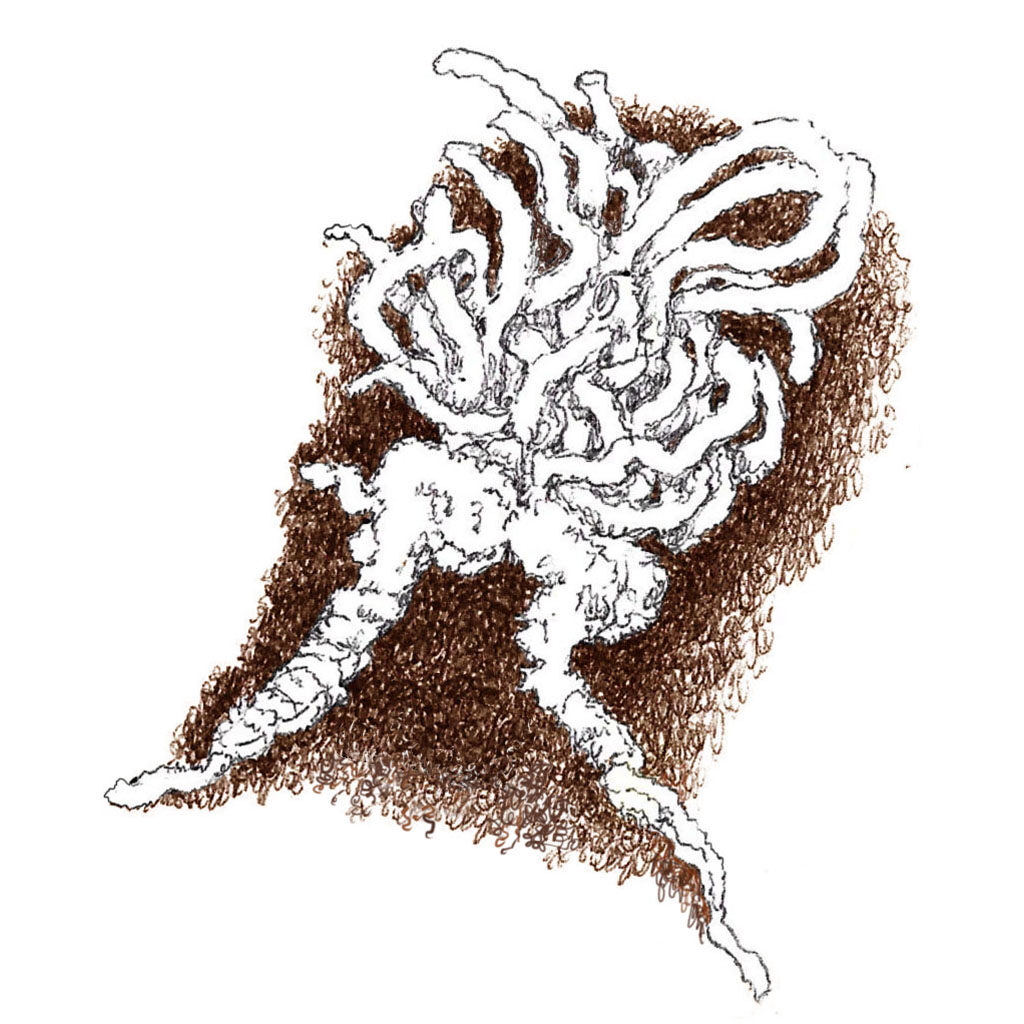Flatid Planthopper

I was out walking the other day and spotted a snarl of white lint, about as big as the end of my finger, moving around oddly on a log. Getting in close for a better look I realized that this lint impersonator had legs. Not visible from the top, but if I got my face really close and looked underneath . . . sure enough, legs. It also had what I thought was a nicely waxed and twiddled mustache – until I realized the waxy twiddled spears were on its rear end. Not sure what that’s all about.
I tapped it gently with a blade of grass, and a bit of its “hair” broke off. Oh! Sorry! When I annoyed it further, it squatted close to the log for an instant, then poof! It blasted off quicker than my eye could follow for a getaway.
The leap gave me a clue. It obviously wasn’t a grasshopper, so it had to be the nymph (immature form) of a planthopper. Sure enough, a google search showed it to be one of the fulgoroid planthopper nymphs, also called a flatid, which extrudes wax from glands around its abdomen, creating a waxy, water-repellent mass of curls which makes it look like an inedible patch of mold or a piece of detritus (lint, maybe?). Many species of flatids are found worldwide, although not all of them create such elaborate waxy curls. The one I found was solo, but here are some similar flatids congregated on a tree.
Planthoppers suck plant juices, and, like aphids, they poop out sugar water after extracting most of the nutrients. If you’ve ever parked your car under an aphid, leafhopper or planthopper infested tree, you may have returned to find a sticky, sweet “honeydew” coating on your car.
The benefit of the waxy coating on the flatid is that the honeydew it poops doesn’t stick to it, which keeps the planthopper from turning into a moldy mop. Also, if a predator sees it moving and tries to grab it, it will get a mouthful of waxy fluff, which discourages further snacking.
Planthoppers are often strange and/or beautiful in both the nymphal and adult stages. In fact, some adults are extremely colorful or have amazing constructions on their dorsal foreparts (pronota). There’s a great video (a tiny bit scatty, but hilarious) about them here.